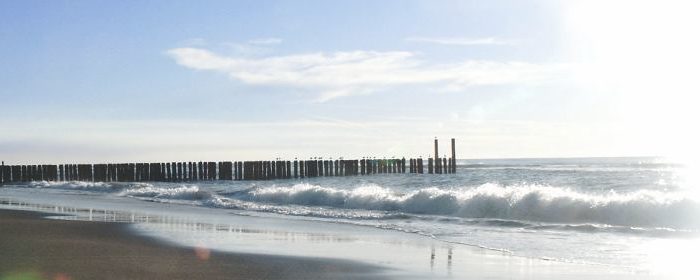OSM
There are plans to relicense the data in OpenStreetMap. So far CC-BY-SA 2.0 is used, but actually it is not the best solution, as the CreativeCommons license does not apply to databases, but to work protected by copyright law.
The OpenStreetMap Foundation has pushed the work on a new license, the Open Database License Agreement (ODbL), developed by Open Data Commons. It is not yet available in a final version, but after reading the available draft, I am convinced, that this license fits the needs of OSM and also my personal wishes.
There is a list of open issues which will hopefully be clarified before the license is released.
I’d like to thank all of those who are involved in developing the ODbL and think that it is good to use it for the OSM data.
Gerade habe ich auf der Mailingliste von OpenStreetMap einen Buchausschnitt des Kinderbuches „Wickie und das Drachenschiff“ gelesen:
Wickie war der erste Nordländer, der eine Landkarte zeichnete. Dadurch hob er ihr Ansehen — was auch dringend nötig war! Die Schweden galten bei den meisten Völkern als schwachköpfig und zurückgeblieben. Wickies Karte war ein so durchschlagender Erfolg, dass sie bald für alle Fahrten in östliche Gebiete benutzt wurde. Wickie ließ sie nämlich kopieren. „Wichtige Entdeckungen“, sagte er, „soll man nicht für sich behalten.
Wenn alle Entdecker ihre Entdeckungen für sich behielten, würde es nicht vorangehen. Teilt man aber allen mit, was man weiß, bekommt man als Gegenleistung das Wissen der anderen. Da haben alle was davon!“ Die Männer fanden, dass das zu weit ginge. Ein Vorsprung war ein vorsprung, fanden sie. Genau so argumentieren heute noch viele Dummköpfe!
Diese Aussage kann ich nur unterstreichen. Die Informationsgesellschaft kommt nur weiter, wenn wir uns auf die Schultern von Giganten stellen können und auf bestehendem Wissen aufbauen können.
The discussion about the licence of the OpenStreetMap data is very important. I’m not very pleased about the current situation and doubt success before any court. Therefor I’m very happy, that the OSM Foundation took the job to improve the situation. Richard, thanks for your post in the OpenGeoData blog. Also in OpenSource buisiness, where the licences and rights are a bit more clear than for the situation of geo databases, you can find examples of companies stealing open/free products and embedding them (often modified) in commercial products without giving anything back to the community or original authors. As I consider this highly unfair it is important that at least the licences require some useful feedback of modifications.
Even though I don’t care about the exact wording or the name of the licence I require the following elements for it:
- commercial usage allowed
- allowed to make changes
- attribution in some form (attribution of the project is enough for me)
- require to give back the changes (copyleft)
Just to say it loud: I am a strong supporter of a copyleft licence for OSM data and I will never give my edits into public domain!
Vor einigen Monaten bin ich über OpenStreetMap gestolpert. Was das ist? – Ganz einfach, ein Projekt, welches sich zum Ziel gesetzt hat Strassenkarten von der ganzen Welt zu produzieren. Auch wenn du nun sagen magst: „Das gibt es doch mit Google Maps oder Map24 schon“ gibt es bei OSM einen elementaren Unterschied: Die Daten sind dort frei verfügbar. D. h., dass man nicht mit einem Fuß im Knast oder zumindest vor Gericht steht, wenn man einen Kartenausschnitt auf die eigene Webseite oder die Einladung zur nächsten Gartenparty setzt.
Wo kommen die Daten her?
Von dir und mir! OpenStreetMap ist wie Wikipedia u. v. A. ein Community-Projekt, welches darauf basiert, dass nachdem er sich registreiert hat JEDER die Karte erweitern und verbessern kann. Wenn es einige Personen gibt, die Daten eintragen, entsteht ein Gesamtwerk, das unbeschreiblichen Nutzen für die Gesellschaft hat und quasi nichts kostet. Falls du schon einmal in einer abgelegenen Gegen mit einem Navigationssystem Auto gefahren bist hat es sich bestimmt schon einmal bei dir beschwert, du würdest dich „Off Road“ oder eben nicht mehr auf eine ihm bekannten Strasse befinden. Ein Projekt wie OpenStreetMap ermöglicht es nun, dass du einfach die fehlende Strasse einzeichnen kannst und der nächste eine vollständigere Karte vorfindet.
OpenStreetMap ist noch sehr jung und unbekannt, darum sind leider auch die verfügbaren Karten noch sehr löchrig und es hat viel „weiss“ auf den Karten. Ich bin aber sicher, dass sich dies bald ändern wird.
